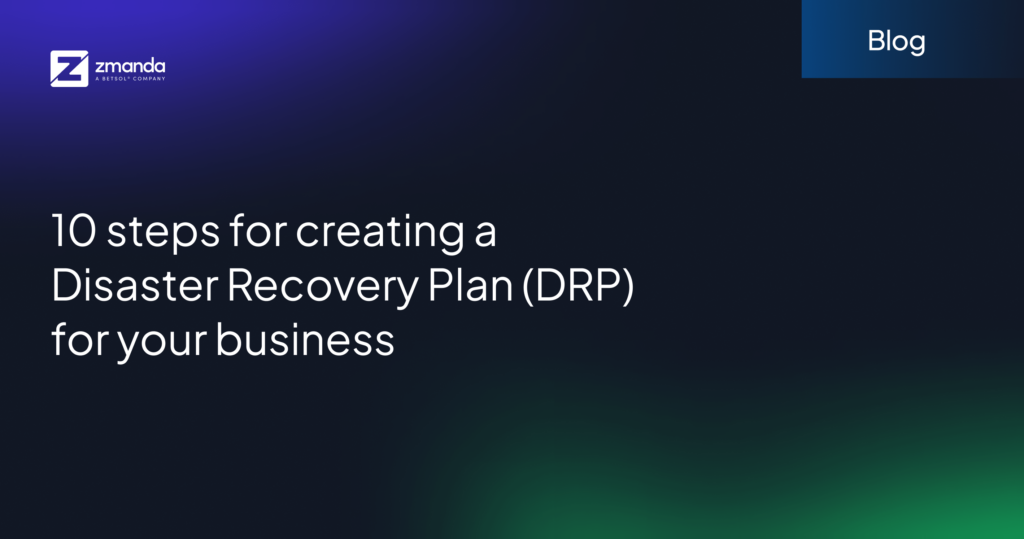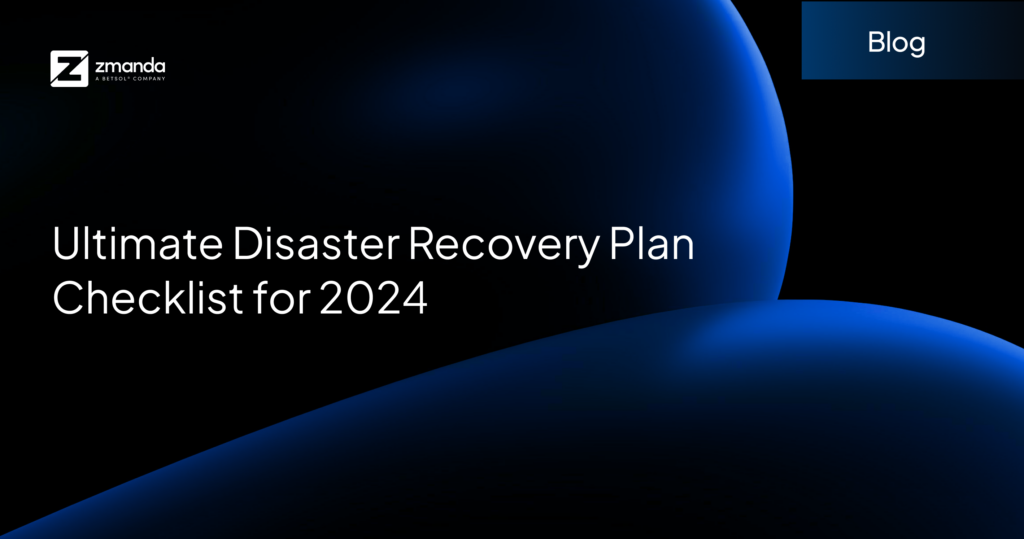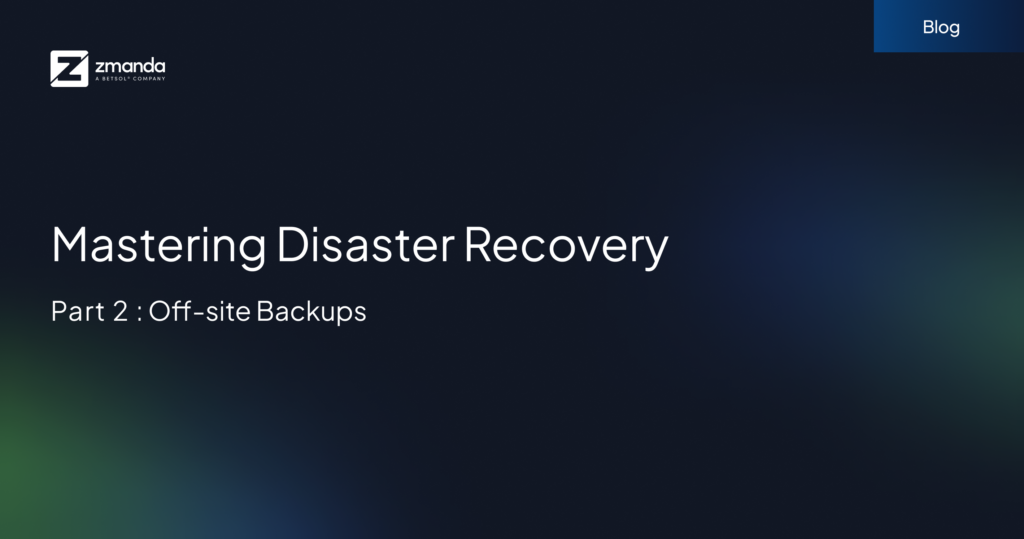
"재앙적인 데이터 손실로 고통받는 기업의 94%는 생존하지 못하고 43%는 다시 문을 열지 않으며 51%는 XNUMX년 이내에 문을 닫습니다."
– 텍사스 대학교
Data is the ‘Heartbeat’ for businesses. It’s understandable why they go to great lengths to protect it from corruption or loss.
But what happens when disaster strikes? A power outage, cyberattack, or even a natural disaster can cripple your IT infrastructure and leave you scrambling to recover your critical data. This is where it’s important to understand what is disaster 회복 (DR). DR is a comprehensive strategy that ensures you can resume operations quickly and minimize downtime in any unforeseen event. By having a robust DR plan in place, you can safeguard your valuable data and ensure business continuity.
재해 복구 란 무엇입니까?
재해 복구 is an organization’s method of regaining access, and functionality to its IT infrastructure after events like a natural disaster, cyber attack, or power outages. Having the right tools, policies, and procedures in place shows whether an organization can meet pre-established goals for recovery speed and point in time.

재해 복구는 어떻게 작동합니까?
Disaster-recovery relies upon the replication of data and computer processing in an 오프 사이트 location not affected by the disaster. When servers go down because of a natural disaster, equipment failure, or cyber attack, the access to the local IT 인프라 is shifted to the remote DR site. This off-site location essentially acts as a backup, ensuring redundancy and minimizing downtime.
In simpler terms, imagine a scenario where a natural disaster, equipment failure, or cyberattack cripples your IT disaster recovery infrastructure. In such an event, a well-designed disaster recovery plan would allow you to seamlessly shift access to your critical systems from your local IT infrastructure to the remote DR site. This remote site acts as a backup, ensuring you can continue operations with minimal disruption. By having a robust disaster recovery plan in place, you safeguard your business from the potential devastation of data loss and minimize downtime caused by unforeseen circumstances.
Why is Disaster Recovery (DR) Essential for Business Continuity?
In today’s fiercely competitive landscape, downtime is a major threat. 가트너. reported that the average cost of downtime is $5,600 every minute, or more than $300,000 per hour. However, according to another study by 어바이어, it may cost as much as $540,000 every hour.
What is disaster recovery? It’s your organization’s shield against such disruptions. DR is a comprehensive strategy encompassing data restoration, system recovery procedures, and business continuity planning. By having a robust DR plan in place, you can:
- Minimize Downtime: Swift restoration of critical systems after a disaster minimizes downtime, allowing you to resume operations quickly and limit the impact on your bottom line.
- Safeguard Data Integrity: Data disaster recovery ensures your valuable data is protected from corruption or loss during unforeseen events, safeguarding sensitive customer information and business-critical records.
- Enhance Disaster Preparedness: A well-defined DR plan empowers your employees with clear steps to take during a crisis, fostering a sense of calm and ensuring a coordinated response that minimizes potential damage.
- Boost Customer Confidence: Customers value businesses that prioritize preparedness. Implementing a DR plan demonstrates your commitment to reliability and uninterrupted service, fostering trust and loyalty.
- 규정 준수: Many industries have regulations mandating data protection and business continuity plans. A DR strategy ensures you meet these compliance requirements, avoiding potential legal issues.
Types of Disaster Recovery
Now that we’ve explored what is disaster recovery (DR) and its critical role in business continuity, let’s delve into the various DR plan types. There’s no one-size-fits-all solution, and the ideal approach depends on your specific needs and budget. Here are some common types of DR options to consider:
- On-premises disaster recovery: This involves creating regular backups of your data onto a secondary storage device located within your facility, offering a readily accessible local recovery option.
- Cloud disaster recovery: This strategy leverages the security and scalability of the cloud by storing your data in a secure offsite cloud storage location, ensuring geographical separation from potential on-site disasters.
- Hot Site Disaster Recovery: This provides the fastest recovery time by maintaining a fully mirrored copy of your IT infrastructure at a separate location. In the event of a disaster, your systems can be switched over instantly with minimal downtime.
- Warm Site Disaster Recovery: This offers a more cost-effective alternative to hot sites. It utilizes a secondary site with basic infrastructure that can be quickly configured to run your critical applications, providing a balance between cost and recovery speed.
- Cold Site Disaster Recovery: This is the most economical option but comes with the longest recovery time. It involves leasing a bare-bones facility that requires significant setup time and configuration after a disaster to restore your systems.
Building a Disaster Recovery (DR) Team
The ever-present threat of downtime demands a robust plan. Now that you understand what is disaster recovery (DR), the importance of building a strong DR team becomes clear. This team, with representatives from IT, operations, security, and management, needs a clear understanding of their roles during a DR event. Here are some key steps to building your DR team:
- Identify Key Roles: Determine the critical functions needed for recovery, such as data restoration, system configuration, and user communication.
- Assign Responsibilities: Assign specific tasks and ownership to team members based on their expertise and skills.
- 교육 제공: Ensure your DR team is thoroughly trained on the disaster recovery plan, including procedures, communication protocols, and their specific roles within the recovery process.
- 정기 테스트: Conduct regular DR drills to test the effectiveness of your plan, identify any weaknesses, and ensure your team is prepared to handle a real-world disaster.
재해 복구 계획이 데이터 복원력으로 이어집니까?
In the most rudimentary form, resilience refers to the ability to overcome struggles and hardships and bounce back from adversity. And, data resiliency is not just about getting back on track when things go wrong; it is also about how firms position themselves to protect their brand value and resources. A resiliency plan enables you to execute planned activities like upgrades, migration, and day-to-day maintenance with no downtime. With proper planning and knowledge, cloud-enabled technology can have a net positive impact on an organization’s overall resilience and recovery posture.
Disaster Recovery with Zmanda
Disaster recovery is not a luxury anymore. Zmanda is a powerful backup and recovery offering for a price less than you would expect. It helps enterprises achieve RPO & RTO objectives – even during major IT outages. XNUMXD덴탈의 IT 팀은 전체 제품 오퍼링에서 원활한 백업 및 복구 프로세스를 기대할 수 있습니다. Zmanda는 데이터베이스, 서버, 애플리케이션 및 VM의 데이터를 백업합니다. Zmanda의 재해 복구 기능은 온프레미스, 클라우드 및 하이브리드 환경에 걸쳐 있습니다. 우리의 Zmanda 재해 복구 솔루션은 중요 데이터 자산에 강력하고 비용 효율적인 재해 복구 기능을 제공합니다. 가자 즈 만다!


